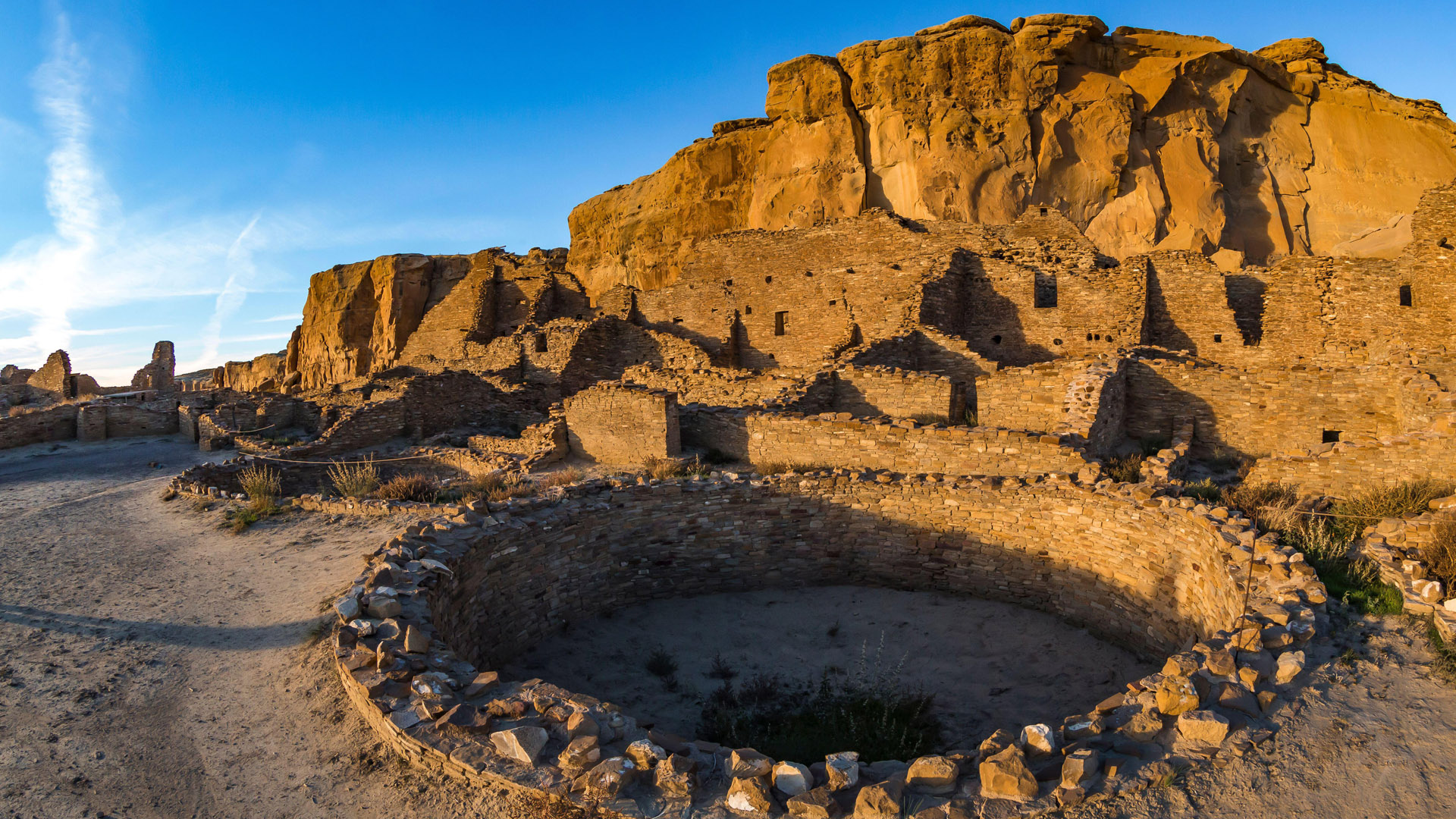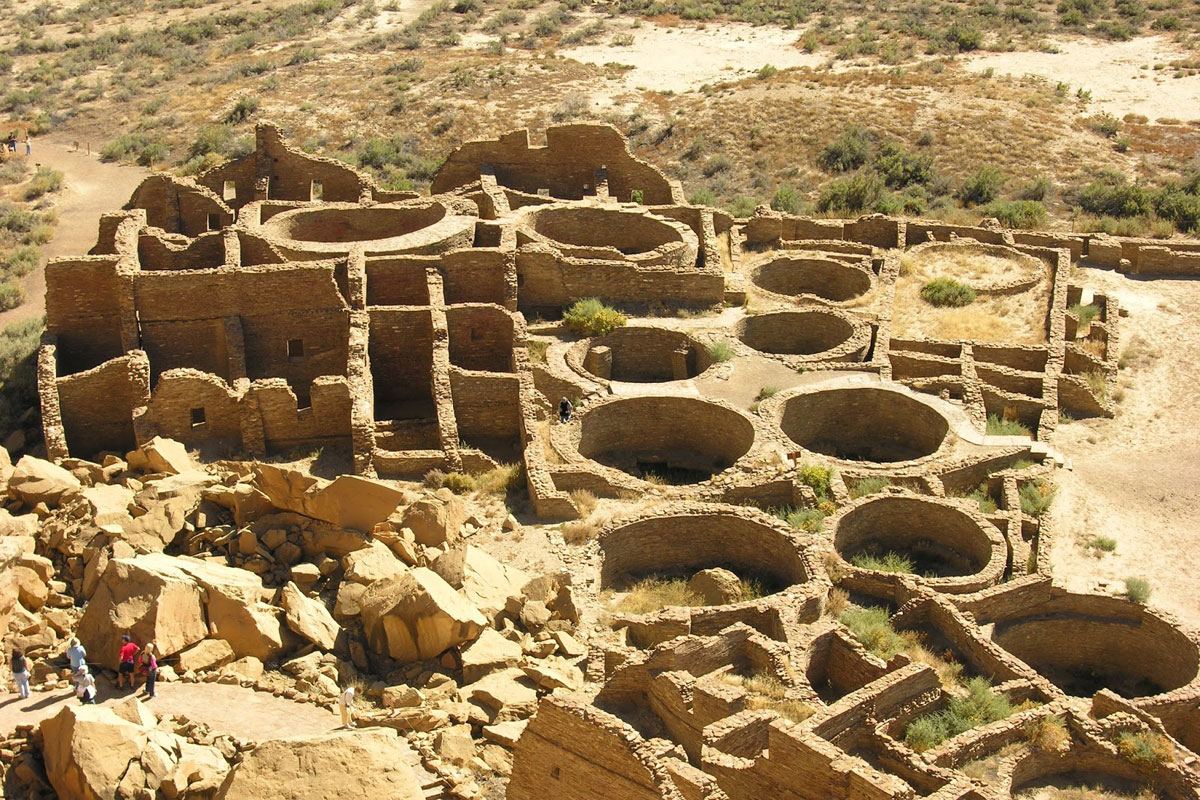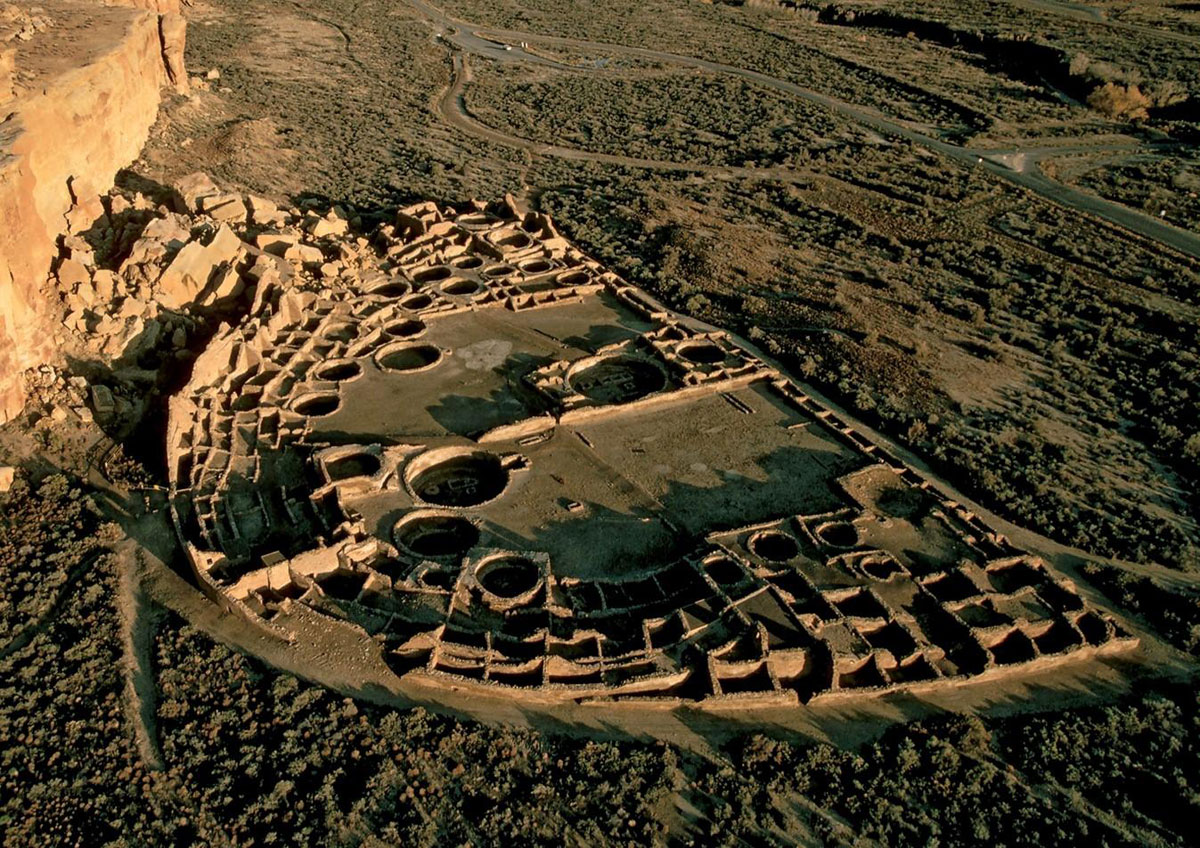
Echoes in the Dust: Unraveling the Mystery of Pueblo Bonito, Chaco Canyon
Imagine a place where the stark beauty of the desert meets the profound ingenuity of an ancient civilization. A landscape sculpted by wind and time, yet bearing the indelible marks of a people who, a thousand years ago, built structures of such monumental scale and precision that they defy easy explanation. This is Chaco Canyon, a remote, arid valley in northwestern New Mexico, and its undisputed crown jewel is Pueblo Bonito.
Pueblo Bonito isn’t just a ruin; it’s a whisper from the past, a silent testament to a complex, sophisticated society that flourished between 850 and 1250 CE. For centuries, archaeologists, historians, and the modern descendants of its builders – the Ancestral Puebloans – have grappled with its enduring mysteries: Who built it? Why here? And why was it ultimately abandoned?

The Cradle of a Civilization
Chaco Canyon itself is a geological wonder, a wide, shallow valley flanked by mesa tops that rise abruptly from the desert floor. While seemingly inhospitable today, around 1,000 years ago, it supported a vibrant culture. The Ancestral Puebloans, formerly and less accurately known as the Anasazi, were master architects and engineers. They transformed this challenging environment into a cultural and ceremonial hub, the likes of which were unparalleled in North America at the time.
Pueblo Bonito stands as the largest and most thoroughly investigated of Chaco’s "Great Houses" – monumental multi-story complexes built with exquisite masonry. Shaped like a massive D, it once contained between 600 and 800 rooms, rising up to five stories high in places. Its construction involved millions of hand-cut sandstone blocks, some weighing hundreds of pounds, painstakingly shaped and fitted without mortar or with a thin clay slurry, creating walls of astonishing stability and beauty. The sheer scale of the undertaking is staggering. "It’s a testament to human ingenuity and communal effort," remarks Dr. Emily Carter, an archaeologist specializing in Southwestern cultures. "To construct something of this magnitude, in this remote location, speaks volumes about their social organization and their shared vision."
An Architectural Marvel and Astronomical Compass
What sets Pueblo Bonito apart is not just its size, but its sophisticated planning and execution. The layout suggests a deliberate design, possibly mirroring cosmological beliefs. Its central plaza is divided by a wall, separating two distinct sections, each with its own cluster of kivas – circular, subterranean ceremonial chambers. Over 30 kivas, including two enormous "Great Kivas," dot the structure, underscoring the spiritual significance of the site.
One of the most compelling aspects of Chacoan architecture is its apparent alignment with celestial events. While not every wall points to a specific astronomical marker, several key alignments within Pueblo Bonito and other Great Houses suggest a deep understanding of the cosmos. The famous "Sun Dagger" at Fajada Butte, a nearby mesa, where light and shadow align with ancient spiral petroglyphs during solstices and equinoxes, is a prime example of this astronomical knowledge. "The precision of their alignments suggests a profound understanding of the cosmos, not just for practical farming but for spiritual connection," notes Dr. Robert Maxwell, a cultural astronomer. "They were tracking the movements of the sun and moon with an accuracy that rivals many early civilizations worldwide."
A Bustling Hub of Trade and Ceremony
Pueblo Bonito was far more than just a large apartment complex. Archaeological evidence paints a picture of a bustling economic and ceremonial center. Excavations have unearthed a wealth of exotic goods, indicating a vast trade network that stretched across North America and into Mesoamerica. Thousands of turquoise beads and pendants, often meticulously crafted, have been found, suggesting that Chaco was a major processing and distribution center for this precious stone, mined from distant sources like the Cerrillos Hills.

Perhaps even more astonishing are the remains of hundreds of macaws, tropical birds whose vibrant feathers were highly prized for ceremonial use. These birds, native to Central America, would have been transported alive over thousands of miles, a logistical feat that speaks to the sophistication of Chacoan trade routes and their connections with distant cultures. Copper bells, seashells from the Pacific Coast, and even chocolate residue found in pottery further underscore Chaco’s role as a nexus for goods, ideas, and people.
The sheer concentration of wealth and ritual objects at Pueblo Bonito suggests it was a site of immense power and prestige. Was it a political capital, governing a vast network of smaller communities? Or was it primarily a ceremonial pilgrimage site, drawing people from hundreds of miles away for religious gatherings and trade fairs? "The debate continues among archaeologists," says Dr. Sarah Jenkins, an expert in Ancestral Puebloan social structures. "Was Chaco a bustling capital or a sacred pilgrimage site? Perhaps it was both, a nexus where spiritual and economic threads intertwined, attracting people for both practical and profound reasons."
The Enigmatic Chaco Phenomenon
Pueblo Bonito was not an isolated marvel. It was the heart of the "Chaco Phenomenon," a vast cultural complex that encompassed over 150 outlier communities connected by an intricate network of meticulously engineered roads – some stretching for hundreds of miles in remarkably straight lines, regardless of topography. These roads, often 30 feet wide, traversed mesas and canyons, suggesting a highly organized society capable of large-scale public works. Their purpose remains a subject of debate: were they purely economic arteries, facilitating trade and movement of goods? Or did they hold a deeper, perhaps ceremonial, significance, used for processions or pilgrimages?
The outlier communities, though smaller, mirrored the architectural styles of the Great Houses, reinforcing the idea of a shared culture and possibly a hierarchical relationship with Chaco Canyon. The scale of the Chacoan world, radiating outwards from Pueblo Bonito, hints at a level of socio-political organization previously thought impossible for pre-Columbian North America.
The Great Abandonment
Despite its grandeur and apparent stability, the Chacoan world, including Pueblo Bonito, began to decline in the mid-12th century. By 1250 CE, the Great Houses were largely abandoned, their inhabitants migrating to other regions, primarily the Rio Grande Valley and the Hopi mesas. The reasons for this profound shift are complex and multifaceted, but environmental factors played a significant role.
The region experienced a prolonged period of severe drought, known as the Great Drought, starting around 1130 CE and intensifying in the late 13th century. This climatic shift would have severely impacted the Chacoans’ agricultural base, which relied on corn, beans, and squash grown with sophisticated irrigation systems. Deforestation, caused by the immense demand for timber for construction (some timbers came from mountains over 50 miles away), further exacerbated environmental stress, leading to erosion and resource depletion.
"Chaco stands as a stark reminder that even the most advanced societies are ultimately tied to the health of their environment," says environmental historian Dr. Laura Thompson. "Their triumph over the harsh desert ultimately became their vulnerability when climate patterns shifted. It’s a powerful lesson for us today."
Beyond environmental pressures, social and political stresses may have also contributed to the decline. As resources dwindled, competition and conflict could have escalated, destabilizing the intricate social fabric that had allowed the Chacoan system to flourish. The descendants of the Chacoans, the modern Pueblo peoples, carry forward their oral traditions and deep reverence for these ancestral lands, offering unique perspectives on the movements and reasons for abandonment.
A Legacy in Stone and Silence
Today, Pueblo Bonito stands as a UNESCO World Heritage Site, protected as part of Chaco Culture National Historical Park. Walking through its silent courtyards and ancient rooms, one can almost hear the echoes of a vibrant past – the chatter of daily life, the chanting of ceremonies, the rhythmic sounds of construction.
The mysteries of Pueblo Bonito endure. Its purpose, the full extent of its influence, and the precise reasons for its abandonment continue to be subjects of active research and speculation. Yet, in its impressive ruins, we find not just questions, but profound answers about human adaptability, architectural genius, and the complex interplay between culture and environment. Pueblo Bonito is more than just an archaeological site; it is a profound testament to the enduring spirit of human endeavor, a silent city in the dust that continues to speak volumes across the centuries.


